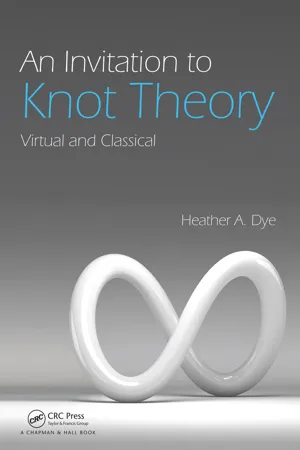
- 256 pages
- English
- ePUB (mobile friendly)
- Available on iOS & Android
About This Book
The Only Undergraduate Textbook to Teach Both Classical and Virtual Knot Theory
An Invitation to Knot Theory: Virtual and Classical gives advanced undergraduate students a gentle introduction to the field of virtual knot theory and mathematical research. It provides the foundation for students to research knot theory and read journal articles on their own. Each chapter includes numerous examples, problems, projects, and suggested readings from research papers. The proofs are written as simply as possible using combinatorial approaches, equivalence classes, and linear algebra.
The text begins with an introduction to virtual knots and counted invariants. It then covers the normalized f -polynomial (Jones polynomial) and other skein invariants before discussing algebraic invariants, such as the quandle and biquandle. The book concludes with two applications of virtual knots: textiles and quantum computation.
Frequently asked questions
Information
Table of contents
- Cover
- Half Title
- Title Page
- Copyright Page
- Dedication
- Table of Contents
- SECTION I Knots and crossings
- SECTION II Knot polynomials
- SECTION III Algebraic structures
- APPENDIX A: Tables
- APPENDIX B: References by chapter
- Index